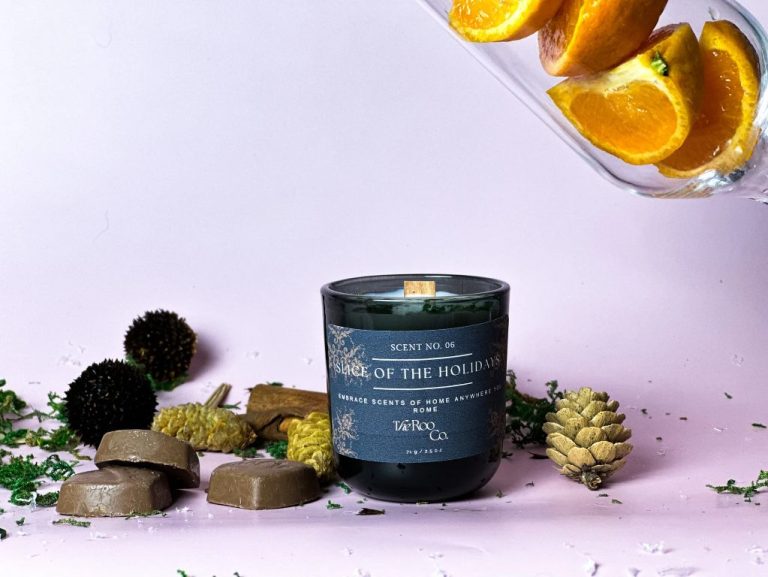Does Balsam Fir Smell Like Pine?
Introducing Balsam Fir
Balsam fir (botanical name Abies balsamea) is an evergreen coniferous tree native to northern North America. It’s found naturally growing across eastern and central Canada, from Newfoundland west to Alberta, and in the northeastern United States (source: https://en.wikipedia.org/wiki/Abies_balsamea).
Balsam fir trees can reach heights of 40-60 feet tall at maturity, with a narrow conical shape. The bark is gray-brown and smooth on young trees, becoming furrowed with age. Needles are flattened, 1-1.5 inches long, bluish-green on top and silvery white underneath, with a distinctive pleasant scent when crushed. The cones are cylindrical, 2-4 inches long, starting out green but ripening to brown. They stand upright on branches near the top of the tree (source: https://www.missouribotanicalgarden.org/PlantFinder/PlantFinderDetails.aspx?taxonid=284972).
Balsam Fir’s Distinctive Fragrance
The scent of balsam fir is often described as fresh, sweet, and resinous. It has a rich, balsamic aroma reminiscent of a pine forest, with citrusy top notes and earthy undertones. The main sources of balsam fir’s distinctive fragrance are its needles, bark, and resin.
When crushed, the needles release a refreshing, clean scent similar to citrus. The bark has a deeper, woodier aroma. But the strongest concentration of fragrance comes from balsam fir resin. This sticky sap oozes from blisters on the tree’s trunk and has a very sweet, piney smell.
According to Eden Botanicals, balsam fir essential oil possesses “a very sweet, rich, deep balsamic, evergreen aroma and a light, clean terpenic top note like that released from the needles and twigs when Christmas trees are brought indoors.” The scent is often described as reminiscent of the holidays.
Comparing to Pine Tree Scent
Pine trees are well known for their fresh, crisp scent that evokes imagery of evergreen forests. The primary compound responsible for the characteristic pine aroma is alpha-pinene, a type of terpene found in high concentrations in pine needles and bark (Source). Alpha-pinene, along with other terpenes like beta-pinene, limonene, and camphene, give pine trees their unmistakable coniferous smell.

While Balsam Fir trees share some fragrance compounds with pines, there are a few key differences that set it apart. Balsam Fir contains high levels of bornyl acetate, which lends a sweet, balsam-like aroma. The composition of monoterpenes like limonene and camphene also differs from pine. Additionally, Balsam Firs tend to have a more citrusy-lemony undertone to their scent compared to the sharper, woodier fragrance of pines. So while Balsam Fir and pine trees evoke the crispness of evergreens, Balsam Fir has a more complex, nuanced scent profile. Discerning noses can detect the subtle yet distinct differences between these coniferous tree species.
Factors Influencing Balsam Fir Scent
There are several key factors that affect the strength and aroma of balsam fir scent:
Climate – Balsam firs grown in cooler climates with abundant rainfall tend to have the strongest, most pronounced scent. The cool weather enables them to better produce and retain the compounds responsible for their signature fragrance.
Time of Year – Balsam firs produce the most scent in spring and summer when they are growing rapidly. The scent is weakest in fall and winter when growth has slowed. The peak scent period is late spring to early summer.
Genetics – Some balsam fir tree varieties naturally produce more scent than others due to genetic differences. For example, the bracteata and phanerolepis subspecies are considered more aromatic than the typical balsamea subspecies.
Overall, climate and seasonal changes have the biggest impact on balsam fir scent strength. However, genetics also play a key role in determining the intensity and characteristics of aroma.
Harvesting Balsam Fir for Fragrance
Balsam fir trees have been harvested for centuries for their fragrant oils and resins. The most common methods used today to extract these aromatic compounds are steam distillation and solvent extraction.
Steam distillation involves subjecting needles, cones, twigs or bark to pressurized steam, causing the plant’s aromatic molecules to evaporate. These vaporized essential oils are captured, condensed, and separated from the water. This is considered one of the best and purest extraction methods, ideal for capturing the complex bouquet of balsam fir.
Solvent extraction uses organic solvents like hexane to dissolve the essential oils. The oils are then separated from the solvents through evaporation and distillation. This method allows capturing fragrances from bark and wood as well as needles. However, some naturally occurring molecules can be altered or destroyed through chemical interactions with the solvents.
When harvesting balsam fir trees for essential oil production, sustainability practices are crucial. Responsible harvesting rotates cutting trees on a 40-60 year cycle to allow regeneration. Only a portion of mature trees are selectively cut, leaving enough to reseed the forest. Sustainable methods help preserve these aromatic trees for future generations.
Uses of Balsam Fir Oils and Resins
Balsam fir oil and resin have many popular uses, especially in potpourri, soaps, candles, and air fresheners. The fresh, piney aroma makes balsam fir a favorite scent for household products and aromatherapy.
Balsam fir oil is commonly added to potpourri mixes to provide an invigorating evergreen fragrance. The oil helps retain the aroma of dried balsam fir needles and other botanicals in potpourri. A few drops can renew the scent of older potpourri as well.
The cleansing scent of balsam fir has long made it a choice ingredient in soaps and detergents. Balsam fir oil lends a refreshing pine aroma to handmade soaps and commercial soaps alike. It also acts as a natural deodorizer.
Candle makers often use balsam fir oil to give their products an energizing scent reminiscent of crisp winter air. The oil’s rich fragrance helps mask the smell of wax while filling a room with its brisk, forest-like aroma when burned.
Lastly, balsam fir oil is commonly added to air fresheners and room sprays to lend its crisp, invigorating fragrance. The scent helps neutralize odors and make indoor spaces smell clean and refreshing.
Allergy and Sensitivity Considerations
Bringing a Balsam Fir tree indoors can potentially cause allergic reactions in some people. Balsam Fir trees release compounds called terpenes as part of their natural aroma. For most people, terpenes are harmless and make the tree smell pleasant. However, terpenes can trigger respiratory allergies, skin irritation, or asthma symptoms in sensitive individuals.
Reactions may include itchy, watery eyes; sneezing; runny nose; coughing; skin rashes; and difficulty breathing. Those with pollen allergies may be more prone to Balsam Fir sensitivities. The potential for reactions depends on the individual, length of exposure, and concentration of terpenes in the environment (Source).
To minimize risks, choose a high-quality, fresh tree and water it daily. Allow it to acclimate outside for a few days before bringing it inside. Avoid damaging needles. Opt for a shorter amount of time with the tree indoors. Increase ventilation while the tree is inside. Medications, air filters, keeping a distance from the tree, and removing it promptly can also help those sensitive to Balsam Fir.
Other Notable Traits of Balsam Fir
Balsam fir is a popular Christmas tree due to its pyramidal shape, strong branches, and pleasing fragrance. The needles have a waxy coating that helps them retain moisture and stay on the tree longer than other firs. Balsam fir is one of the major Christmas tree species grown in the United States and Canada.
The seeds and foliage of balsam fir are an important food source for wildlife. Moose, deer, rabbits, squirrels, and birds eat the twigs and foliage year-round. The seeds are eaten by small mammals and birds. Balsam fir provides protective winter cover for deer, moose and other wildlife.
Balsam fir is also used for lumber, though it is considered lower quality than other firs. The wood is used for boxes, crates, pulps, and construction lumber. Balsam fir lumber is light in weight and color, has good strength properties, and imparts a pleasing aroma.
According to the Wild Adirondacks, balsam fir wood was traditionally used by Native Americans for constructing canoes, shelter poles, sleds, snowshoes, frames for teepees, household items and more.
Cultivating Balsam Firs
Balsam firs thrive when planted in moist, acidic, well-draining soil. They prefer loamy sand, sandy loam, or sandy clay loam soil types with a pH between 4.5-5.5. Balsam firs grow best in USDA zones 3-5 where temperatures reach -30 to -40°F in winter. When planting, choose a partially shaded location and space trees 15-20 feet apart. Balsam fir seedlings should be kept well watered their first 2 years until the root system is well established.
Balsam firs prefer consistent moisture, though the soil should not become waterlogged. Drought and dry soil can cause damage and increase susceptibility to pests. Soil moisture can be maintained by using wood chip mulch around the base. An annual deep watering is recommended during hot summer months. Balsam firs have relatively slow growth, adding anywhere from 6 inches to 1 foot per year. Pruning is not necessary but light trimming can shape the tree.
Balsam fir trees can be susceptible to some pests like balsam twig aphids, balsam wooly adelgid, mites, and scale. Maintaining tree health through proper watering, mulching, and avoiding damage to the bark can help prevent infestations. Pest problems are most common when trees are stressed. Chemical sprays or horticultural oils may be used for heavy infestations. Checking regularly for signs of pests allows for early treatment.
Sources:
https://www.thespruce.com/balsam-fir-care-guide-5199198
https://pevachcorp.com/everything-you-need-to-know-about-growing-a-balsam-fir/
Conclusion
In summary, Balsam Fir has a distinctive pine-like fragrance that sets it apart from other conifers. The scent is produced by resin pockets within the bark and needles containing aromatic compounds like bornyl acetate and delta-3-carene. These fragrant oils have made Balsam Fir an important tree, harvested for use in soaps, candles, air fresheners and more. Being able to identify trees by scent can be a useful skill for nature enthusiasts, and Balsam Fir’s memorable piney aroma makes it one of the easier ones to recognize. Sustainably harvesting Balsam Firs for their oils and resins can support rural economies, provided careful forest management practices are followed. The next time you encounter an evergreen in the forest with a sweet, balsam aroma, chances are it’s a Balsam Fir!






